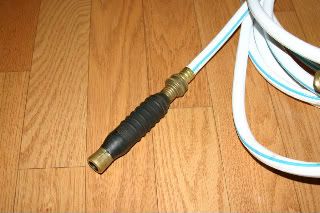Quote:
|
Originally Posted by insite
Extra engine.  |
Nice to have a spare, eh?
Quote:
|
Originally Posted by insite
Btw frodo, this doesnt change the direction you want to flush the motor at the pump
|
OK, I was half way through typing that question when I realized you had already anticipated it and responded (with the answer I expected!)
The other question I had was one of PRESSURE. I've been told (thank you,
JFP) that too high a pressure, including that produced by a garden hose, could be a problem when flushing, especially with the radiator, heater core and oil cooler. Per suggestions from more than one source, I plan to back flush the engine and the rest of the system separately. With regard to the engine flush, the first two (radiator, heater core) wouldn't be involved I guess (though I'm wondering if I'd need to clamp off the
other big hose---the one not shown in my pics, the one NOT going through the t'stat---to be sure that's the case.) That may be all moot, though, since back flushing the engine (ie through
D) will still include the oil cooler.
The conclusion would then have to be that, if too high a pressure can be a problem, that would still be true regardless of whether you're doing the engine circuit or the rest of the system (radiators, etc). True?
For those who have done back flushes, have you worried about (or even known about) any potential problems with too much pressure? If so, how have you worked it so as to not exceed a "safe" pressure? If you didn't worry about it, have you had any problems?
I ask, because I had considered (
considered!) using this:

It's a plumbing tool, for unplugging stuck drains. The attractive feature is that, when attached to a hose and water turned on, the black rubber part expands, filling whatever hole it's in. It creates a pretty tight seal. Then the water that flows actually pulses somewhat (maybe helping to stir up missing impeller blade pieces!). Without being able to measure the pressure it creates, I'm a little hesitant to use it. OTOH, unless I can incorporate some sort of pressure gauge into the system, I'm not really sure how to monitor the pressure anyway (with or without the plumber's tool).
Thoughts?